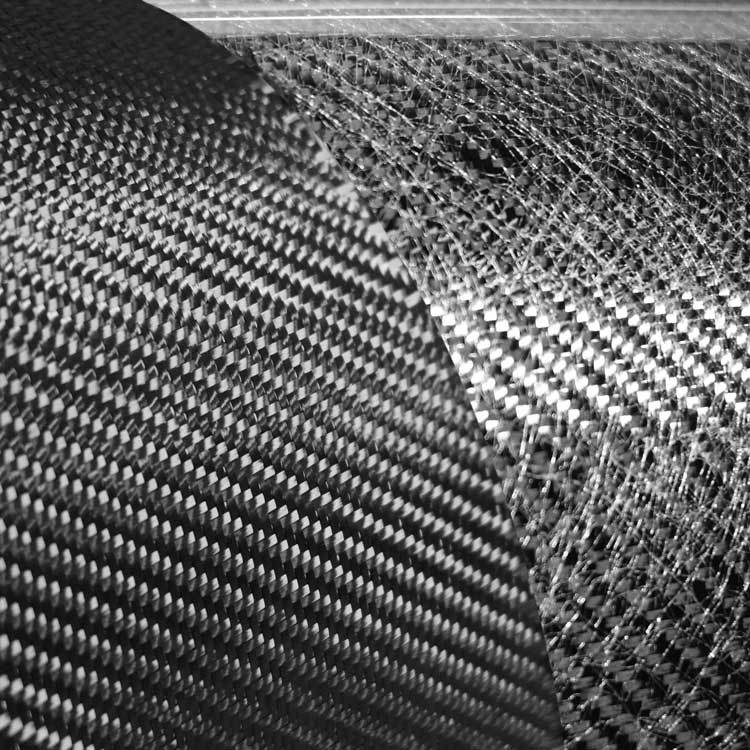Enter the captivating realm of white carbon fiber, where strength and allure unite. This extraordinary material, known for its remarkable durability and eye-catching aesthetics, has been making waves across industries. From automotive to aerospace, sports equipment to luxury goods, white carbon fiber has become a go-to choice for designers and engineers seeking the perfect balance between strength and style. With its lightweight composition and high tensile strength, white carbon fiber packs a powerful punch. Its unrivaled strength-to-weight ratio has made it a game-changer in automotive manufacturing, enabling the creation of sleek, high-performance vehicles. But it doesn't stop there. The allure of white carbon fiber extends beyond its strength, as it effortlessly adds a touch of elegance to any product it graces. In this article, we delve into the fascinating world of white carbon fiber, exploring its origins, properties, and wide-ranging applications. Discover the secrets behind its unparalleled strength and uncover the secrets of its mesmerizing allure. Join us as we unveil the wonders of white carbon fiber and uncover why it has captivated the imaginations of designers and engineers worldwide.

Properties and characteristics of white carbon black fiber
The performance parameters of white carbon black fiber show remarkable values. Its tensile strength usually reaches more than 3,000 mpa per square millimeter, while the modulus can be as high as 150 to 200 mpa per square millimeter, showing excellent strength and stiffness. The thermal conductivity of white carbon black fiber is about 0.02 watts/(m · Kelvin) per meter, which makes it have excellent thermal conductivity under high-temperature conditions. In addition, its chemical stability is maintained in an acid-base environment, showing corrosion resistance.
The application of white carbon black fiber in various industries
White carbon fiber is widely used in aerospace, automotive, construction, medical, and sports industries. In the aerospace field, white carbon black fiber is often used to manufacture aircraft structural parts, its a specific strength of more than 1000 mpa/g, significantly improving the overall performance of aircraft. In automotive manufacturing, the density of white carbon black fiber is less than 1.8 g/cm ³, making it ideal for manufacturing lightweight body parts and improving fuel economy. In the field of construction, its high strength and stiffness give structural parts greater stability while reducing overall weight. In medical devices, the biocompatibility of carbon black fibers has been widely used to create lighter and more durable medical devices. In sports equipment, the high strength of white carbon black fiber provides the possibility for manufacturing high-performance sports equipment.
Professional comparison between white carbon black fiber and traditional materials
Advantages:
Lightweight and high strength: Carbon black fibers stand out in lightweight applications, especially in the automotive and aerospace sectors, due to their low density and excellent tensile strength. Its high specific strength makes it ideal for reducing structural weight and improving performance.
Thermal conductivity: The excellent thermal conductivity of white carbon black fibers at high temperatures provides advantages for applications in demanding thermal management environments. Compared to traditional materials, its performance in heat transfer makes it excellent in some special industrial applications.
Corrosion resistance and chemical stability: The corrosion resistance and chemical stability of white carbon black fiber make it perform well in harsh environments, especially in Marine and chemical industries. Its corrosion resistance provides a longer service life for the product.
Design freedom: Due to its plasticity and high strength, carbon black fibers provide designers with greater freedom to create more complex and lightweight product structures that optimize overall performance.
Weaknesses:
High manufacturing costs: The manufacturing cost of white carbon black fiber is relatively high, which is mainly due to the need for high-quality raw materials and complex manufacturing techniques in the preparation process. This could limit its widespread use in mass production.
Processing difficulty: Due to its special physical and chemical properties, the processing process of white carbon black fiber is relatively complex, requiring highly professional technology and equipment, which increases the technical threshold of manufacturing.
Limited color selection: Compared with traditional materials, the color selection of white carbon black fiber is limited. While it is possible to change the color by adding pigments, this may still be limited by some design requirements.

Comprehensive evaluation:
White carbon black fiber has attracted much attention for its excellent properties in specific fields. Despite some challenges, such as high manufacturing costs and complex processing, as the technology continues to evolve, it is expected to play a more important role in more areas, driving innovation and progress in the field of engineered materials.
The manufacturing process of white carbon black fiber
The manufacturing process of white carbon black fiber is a complex and sophisticated process that usually includes the following major steps:
Raw material preparation: The key raw material for the preparation of white carbon black fiber is usually polypropylene or other polymer compounds. These raw materials are carefully blended and processed to ensure the quality and performance of the final product.
Polymer spinning: The pre-treated polymer is spun by spinning spinnerets to form slender fibers. Control at this stage is crucial for the diameter and uniformity of the fibers.
Drawing and stretching: During drawing and stretching, the fibers are heated and stretched to increase their strength and improve their crystalline structure. This step is crucial for adjusting the properties of the fiber.
Curing: After stretching, the white carbon black fiber needs to be heated or chemically treated to solidify its structure, ensuring that it retains the desired physical and chemical properties.
Cutting and finishing: Long fibers are cut to the required length and finished to ensure that the appearance and performance of the final product meet the specifications.
Surface treatment: Depending on the application requirements of the final product, the white carbon black fiber may need to be surface treated to improve its adhesion to other materials or increase its corrosion resistance.
White carbon black fiber product maintenance skills
Maintaining white carbon fiber products requires certain techniques to ensure the durability of their performance and appearance:
Cleaning: Regularly clean the surface of the carbon black fiber with a mild cleaner to prevent the accumulation of dust, stains, and dirt.
Avoid high temperatures: Try to avoid exposing white carbon black fiber products to extremely high temperatures for a long time to prevent structural changes and performance degradation.
Sun protection: If carbon black fiber products are used outdoors, use a sunscreen coating or cover to reduce the effects of UV rays and prevent color fading and surface aging.
Regular inspection: Regular inspection of the surface and connection parts of the white carbon black fiber product, timely repair of possible damage or wear.
Suitable load usage: Avoid overload by using structures made of carbon black fibers to ensure stable performance over their design life.
By adopting proper maintenance techniques, the service life of carbon black fiber products can be extended to ensure that they can maintain excellent performance and appearance in a variety of environments.
White carbon black fiber in the automotive industry
White carbon fiber is not only a material of choice in the automotive industry, but also a key technology to drive innovation and sustainable development. Its lightweight properties are crucial to achieving the green and efficient goals of the car. By using white carbon black fiber, automakers can significantly reduce vehicle weight, thereby improving fuel efficiency, reducing environmental impact, and meeting stringent emission standards.
In addition to being lightweight, white carbon black fiber also gives car designers more freedom. Its plasticity and strength allow manufacturers to design more complex and elegant body structures that improve vehicle aerodynamic performance, reduce wind resistance, and further improve fuel economy.
In the field of electric vehicles, the application of white carbon black fiber has become increasingly important. Since electric vehicles rely on batteries as energy storage, reducing vehicle weight can extend the driving range and improve battery utilization. The high strength and lightweight properties of white carbon black fibers have become indispensable materials in the manufacture of electric vehicles, supporting the realization of zero-emission, high-performance electric mobility.
Overall, the continued application of white carbon black fiber in the automotive industry will not only be a trend but also open up new possibilities for the development of future automotive technology. With the continuous advancement of technology and the accumulation of application experience, we are expected to see more innovative applications of white carbon black fiber, promoting the automotive industry in a more environmentally friendly and efficient direction.
White carbon fiber for the sports and outdoor industry
In the sports and outdoor industry, the application of white carbon black fiber is increasingly attracting attention. Its high strength and lightweight characteristics give sports equipment and outdoor products excellent performance. Sports equipment such as bicycles, golf clubs, and snowboards are made lighter and stronger by the use of silica fibers, which also provide a better sense of control during exercise. At the same time, outdoor products such as tents, trekking poles, and outdoor clothing take advantage of the corrosion and UV resistance properties of carbon black fibers to improve durability and make the outdoor experience more reliable.
Conclusion: The future of white carbon black fiber
As a multifunctional and high-performance material, white carbon black fiber has a broad application prospect in the future. With the increasing demand for lightweight, high-strength, and environmentally friendly materials, white carbon black fiber will play a more important role in various fields. The automotive industry will continue to contribute to the realization of more efficient and environmentally friendly modes of transportation. At the same time, in the sports and outdoor industry, white carbon black fiber will continue to promote the innovation of sports equipment and outdoor supplies, providing sports enthusiasts with more advanced equipment. Overall, the future of carbon black fiber will be promoted by scientific and technological innovation, environmental awareness, and industrial development, ushering in a wider range of applications and more sustainable development

FAQs about White Carbon Fiber
1. Is there white carbon fiber?
Yes, there is white carbon fiber. It is a type of carbon fiber that is produced with a white pigment or coating, giving it a distinct appearance. The color of carbon fiber can be modified during the manufacturing process by incorporating pigments or coatings into the resin.
2. How expensive is white carbon fiber?
The cost of white carbon fiber can vary based on several factors. It depends on the quality of the material, the specific manufacturing processes used, and any additional treatments or coatings applied to achieve the desired color. Generally, colored carbon fiber products, including white, may be slightly more expensive than their natural black counterparts due to the added complexities of achieving specific colors.
3. Can carbon fiber be any color?
Carbon fiber can be produced in various colors by incorporating different pigments or coatings into the resin during the manufacturing process. This flexibility allows manufacturers to create carbon fiber products in a wide range of colors to meet specific design preferences or application requirements.
Yes, white carbon does exist. It refers to carbon fiber products that have been manufactured to have a white appearance. The color is achieved by adding white pigments or coatings during the production of the carbon fiber.
These FAQs highlight the existence of white carbon fiber, its cost factors, the ability to produce carbon fiber in different colors, and the presence of specifically manufactured white carbon fiber products.
GET QUOTE
Visit our website: https://www.nbyichou.com/
Email us: [email protected]
Call us/WhatsApp: +86 13355741031
Chat with us: Live chat support available on our website